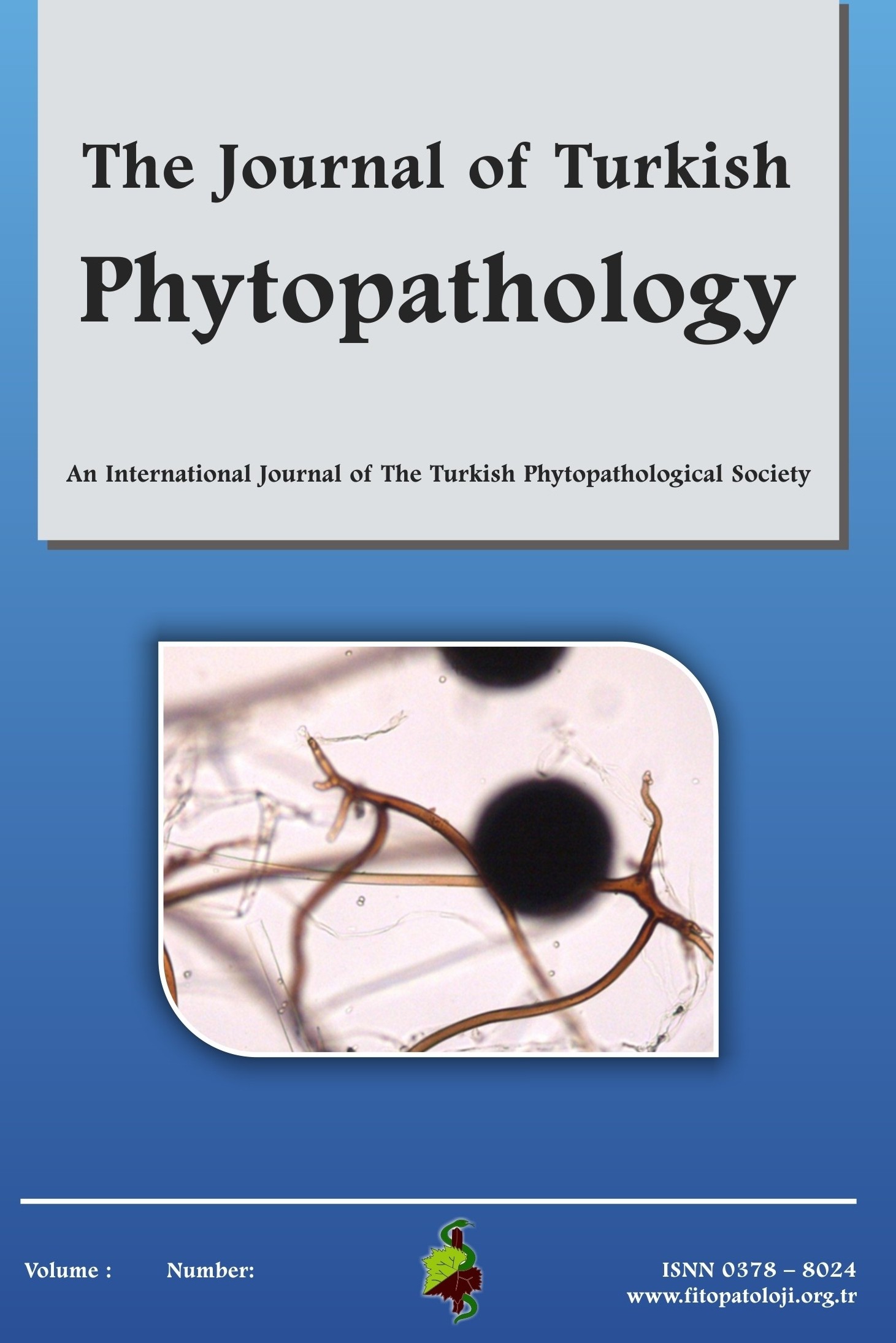Ascochyta Rabiei'nin TÜRK İzolatlarının Solanapyrone Üretimi ve Nohutlar Üzerindeki Fitotoksiteleri
-
Solanapyrones Produced by Turkish Isolates of Ascochyta rabiei and Their Phytotoxicity on Chickpeas
Randomly selected four isolates were grown on Czapek Dox liquid medium supplemented with metal cations for 7, 14 and 21 days in order to determine kinetics of solanapyrones production during in vitro growth of Turkish isolates of Ascochyta rabiei. After culture filtrates were passed through the C18 cartridge, the solanapyrones were eluted with 2 ml acetonitrile. Quantitation of solanapyrones was determined with LC/MS analyses. Maximum solanapyrones production of the isolates was observed on 14th day of incubation. Therefore, quantitation of solanapyrones of the rest 63 isolates of A. rabiei was also determined on the 14th day. Of the 67 A. rabiei isolates used in the present study, it was determined that 66 (98.5 %) isolates produced solanapyrone A, 18 (26.9 %) isolates produced solanapyrone B and 64 (95.5 %) isolates produced solanapyrone C. Toxicity of solanapyrones on both sensitive (ILC 1929) and resistant (ILC 3279) chickpea cultivars were demonstrated by the living cell bioassay. The LD50 concentrations for solanapyrone A, B and C in the bioassay for the sensitive cultivars were respectively 18.6, 23.2 and 96.8 µg/ml while those for the resistant cultivars were respectively 34.5, 36.2 and 109.3 µg/ml. The LD50 concentrations of the mix of solanapyrones in the sensitive and resistant cultivars were respectively 42.4 and 45.4 µg/ml
